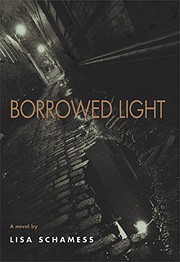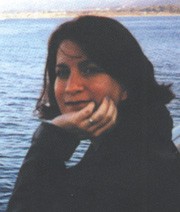
‘Borrowed Light’ shines
Lisa Schamess stepped into the SMU Bookstore and looked around, wondering where to begin. She found what she was looking for perched on the edge of the information desk in a neat little stack. The book was her very own first published novel, Borrowed Light, which tells the story of a gay man’s struggle with AIDS. She flipped through its pages looking for a specific passage, and when she had found it, she gently placed the copy with its signed-by-the-author sticker plastered on the front of it back onto the counter.
“That was nice of them to put it there,” she remarked as she made her way out of the store.
Schamess, an SMU graduate, returned to campus and her native city of Dallas to promote her book through various signings and readings (one at SMU’s Faculty Club) and to lecture to creative writing students. Her book was published in October through SMU Press.
A theater major, Schamess took C.W. Smith’s creative writing class as an elective her junior year and decided she didn’t want to spend another semester away from writing. She decided to stick with theater, however, and graduated with a bachelor’s in fine arts in May 1985.
After graduation, she moved to Washington, D.C., planning to stay there “only till she learned to take the bus,” what she thought would be a short time. She has lived there since. She waited tables while struggling to settle into the city until she stumbled into a job in historic preservation.
Then in 1995, she and her newlywed husband Gil started a writing and editing business. In 1998, they had a daughter, Mona. In mid-1999 Gil was diagnosed with cancer. He died in January 2000. She received news in September the same year that her novel had been accepted by SMU Press and would be published.
Kathryn M. Lang, senior editor for SMU Press, said it received the information about Schamess from C.W. Smith, who has acted as a mentor to Schamess since her graduation.
“He told me that he thought it would be the kind of project that we would really have some interest in,” Lang said.
She also said Smith said he was very biased and thought that Schamess was a very good writer.
Since hearing that her novel would be published, Schamess said she has been working part time and raising Mona, who turns 4 in December. She is also a featured columnist on the Beliefnet Web site. She is now studying for her master’s of fine arts in creative writing at American University. She hopes to teach someday. She attributes her writing technique to Carole Maso, whom she studied with in 1992, and to Amherst Writers and Artists.
“The AWA approach to workshops,” Schamess explained, “is to create a very relaxed, supportive environment, in which writers can let down their guard and draft new material, often departing from what they have ordinarily done as writers, discovering new characters and ways of telling stories.”
It was an exercise she did under Maso’s instruction in 1992 that became Borrowed Light. The exercise was to visit the AIDS quilt while it was on the National Mall in D.C. and just write everything down.
That story was built upon throughout the course of many years, during which she lost many people who were close to her including both parents, two close friends and her husband.
“Books, sadly, don’t get begun and finished as quickly as some lives,” Schamess said. “I think this area of human struggle will always be a crucial one for me to explore as a writer.”
Schamess was on campus recently where she walked into Smith’s Introduction to Fiction class – in the very same classroom where she was taught 20 years ago.
She sat down while Veronica Terefenko, a sophomore in the class, finished reading a piece that she had been chosen to read to the class while Schamess was visiting. Schamess pulled a black composition book out of her backpack and began to scribble down notes.
Then when Terefenko was finished, she lead the class in critiquing the story.
“Having a professional writer come into our class was really interesting,” Terefenko said. “Some of the ideas she had for my story in particular really helped me.”
Having once been in these students’ shoes, Schamess said that while lecturing them, she thought of how she used to feel sitting in the same position.
“It’s sort of like sending a message in a bottle back to myself at that age,” Schamess said.
“I could only kind of cast back to how it felt to me 20 years ago when a visiting writer would come to campus.”
Schamess advises students who are interested in writing to “read what you love and write what you see without judgment.”
“I hope I was saying something (in class) that the old me would have wanted to hear and that there was someone in the audience kind of like the old me,” she said.
She went on to say, “It’s really important not to idealize the writing process or wait for the ‘right time’ to write… just write.”
“If you stay interested in one thing for 20 years,” Schamess said, “you’d be amazed where you wind up.”

‘Borrowed Light’ shines








